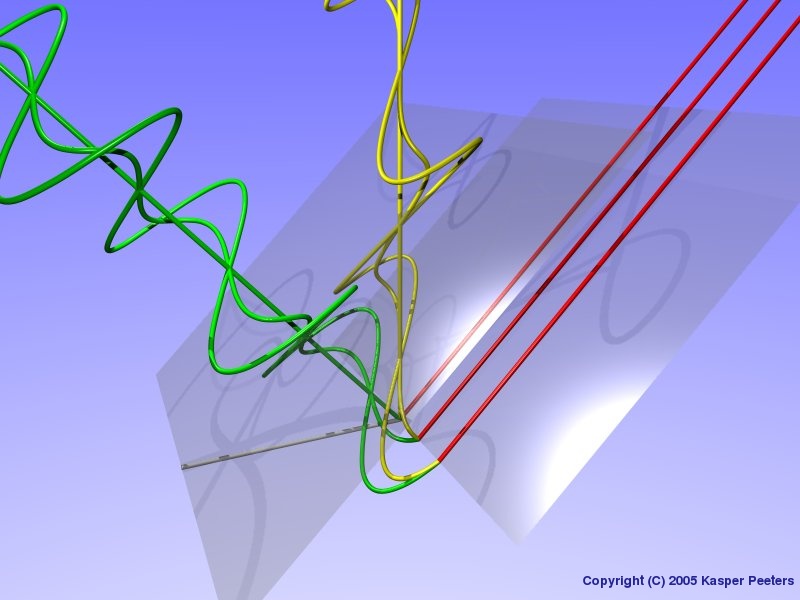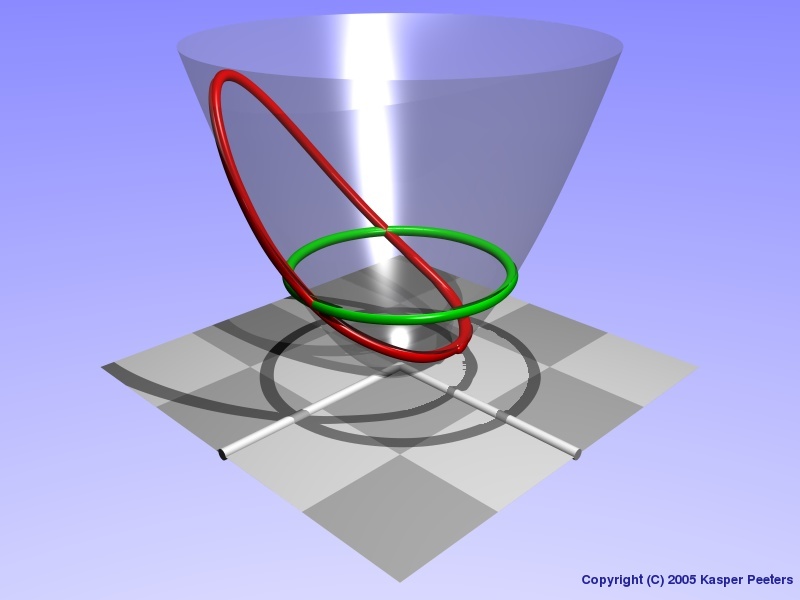High-energy physics
Holography and string/gauge theory duality
Ideas about a duality between gauge fields and
strings have been around for many decades. During the last ten years,
these ideas have taken a much more concrete mathematical form (in the
form of ``holographic duals'' involving strings in extra
dimensions). String descriptions of the strongly coupled dynamics of
semi-realistic gauge theories, exhibiting confinement and chiral
symmetry breaking, are now available. These provide remarkably simple
ways to compute properties of the strongly coupled ``quark-gluon
fluid'' phase, and also shed new light on various phenomenological
models of hadron fragmentation.
During the last few years, holographic techniques have also
been applied to superfluids and superconductors. This again is
an interesting new approach to study strongly coupled condensed
matter systems. We have looked at so-called `colourful' superconductors,
![[pdf]](pictures/adobe_pdf_icon_small.png) |
Exploring colourful holographic superconductors
arXiv:0907.1508
with Jonathan Powell and Marija Zamaklar. |
String theory and supersymmetry
A large part of my work deals with string
theory and supersymmetry. String theory predicts that all the
known elementary particles correspond, at even smaller distance
scales, to excitations of a single, string-like object. The
quantum gravitational force arises automagically (read much more
about it at
superstringtheory.com).
String theory effects can be studied in the form of
higher-derivative corrections to the Einstein-Hilbert action.
Those quantum corrections are constrained by a variety of
symmetries. See e.g.
![[pdf]](pictures/adobe_pdf_icon_small.png) |
Supersymmetric higher-derivative actions in ten and eleven
dimensions, the associated superalgebras and their formulation
in superspace
hep-th/0010167,
with Pierre Vanhove and Anders Westerberg. |
We also used
string scattering amplitudes to analyse such effective actions;
see for instance
![[pdf]](pictures/adobe_pdf_icon_small.png) |
The Ramond-Ramond sector of string theory
beyond leading order
hep-th/0307298,
with Anders Westerberg, |
in which we worked out various
string amplitudes with external Ramond-Ramond gauge field
state. See the
citation list of
the big paper above for pointers to the literature. These
higher-derivative corrections have various applications in the
study of stringy black holes.
Another string topic on which I have been working is the study
of large strings in the context of the AdS/CFT correspondence
(see the picture). This work has appeared in
![[pdf]](pictures/adobe_pdf_icon_small.png) |
Splitting spinning strings in
AdS/CFT
hep-th/0410275
with Jan Plefka and Marija Zamaklar. |
In many of these computations, my symbolic computer algebra
software
Cadabra
has been useful.
Soliton dynamics beyond the moduli space
Solitons in field theory typically exhibit very complicated
dynamics. By restricting attention only to the fluctuations of
their zero-energy deformations, one arrives at the celebrated
"moduli space approximation". While this is a relatively good
approximation for half-BPS solitons, it fails to qualitatively
describe the dynamics for systems with less supersymmetry.
The analytical and numerical tools to study quarter-BPS solitons
are described in
![[pdf]](pictures/adobe_pdf_icon_small.png) |
Motion on moduli spaces with potentials
hep-th/0107164,
with Marija Zamaklar. |
You can find the
associated programs
(which also produced the image on the left) on a
separate page.
World-line path integrals
In the large tension limit, the string world-sheet genus
expansion of string theory reduces to a world-line perturbation
series based on Schwinger propagators. This provides a very
interesting alternative perspective on computations field
theory. I worked mainly on relations of this formalism to index
theorems:
![[pdf]](pictures/adobe_pdf_icon_small.png) |
Spinors on manifolds with boundary: APS index theorems with torsion,
hep-th/9901016
with Andrew Waldron. |
I am also interested in the applications of these ideas in the
context of finite-temperature physics.


